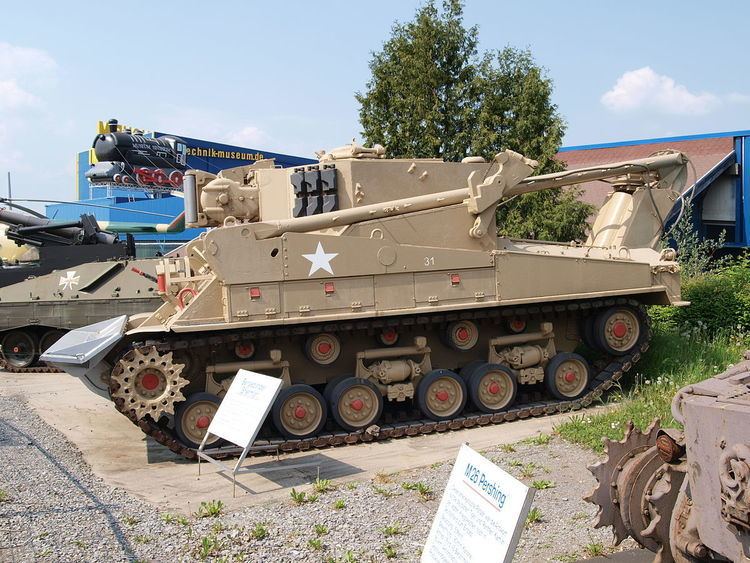Place of origin United States Wars none | In service 1953-1960's Designer Bowen-McLaughlin-York | |
 | ||
Type Armored recovery vehicle Used by United States, Spain, Israel | ||
The M74 tank recovery vehicle (M74) was an engineer vehicle used by the U.S. Army in the 1950s. It was designed to cope with the heavier weights of the M26 Pershing and M47 Patton. It could also be suitable for light dozing, since it had a hydraulic, front-mounted spade. It was produced in the thousands by Bowen-McLaughlin-York and were also converted from M4A3 Shermans by Bowen starting in 1954. Later, some were converted from M32B1s by Rock Island Arsenal until 1958.
Contents
Development
After the Korean War the M74 was designed to cope with the heavier weights of the new vehicles that were being introduced.
Designed in 1953, it based on the M4A3 HVSS medium tank, it was developed to cope with the heavier M26 Pershing and M47 Patton which were entering service, which the M32 Armored Recovery Vehicle (ARV) was unable to retrieve. Using the standard Ford GAA and wide tracks, the chassis would be rebuilt. It was replaced in service with the U.S. Army by the M88 Hercules.
Design
The M74 was fitted with a 60,000 lb (27,000 kg) hydraulic winch as well as a lighter-duty general purpose one, a hydraulic A-frame, and hydraulic front-mounted spade, which was suitable for light dozing, as well as serving as an anchor for heavy winching operations. It had a .50-caliber M2 machine gun atop the hull and a .30-cal M1919A4 machine gun in the right bow.
Production
The M74 was produced from 1953 to 1955 by Bowen-McLaughlin-York in the thousands. The mass conversion of M4A3 Shermans into M74 recovery vehicles was started by Bowen in 1954. Some were also converted from old M32B1 ARVs by Rock Island Arsenal until 1958.
